The Webcomic Overlook #17: 8-Bit Theater

Recently, Homestar Runner did a great cartoon about webcomics. Strong Bad, or rather the Brothers Chaps, leveled some criticisms against popular webcomic types, like the gamer and fantasy subgenres. (“They’re all about video games, gamernerds, webgeeks, dorknerds, gamewads, nerdgames, webwebs, and elves.”)
However, some of the most pointed zingers were directed at the infamous ugly kid brother of webcomics, the sprite comic. I’ll let Strong Bad explain: “If you can’t draw, never fear, just steal some graphics from your favorite video game. And add yet another unlicensed pixel comic to the overcrowded, overstunk landfill of web comics.” Strong Bad’s quip of how you can “MS Paint your way to a non-punchline” wouldn’t be so funny if webcomics like Nintendo Acres weren’t doing it constantly. Even the Wikipedia entry on sprite comics reads like an extended derogatory insult on how terrible sprite comics are… and the entry was probably written by geeks pretty low on the heirarchy already, so there you go.
But do sprite comics have to stand for terrible, lazy artwork? Taken on its own merits, there is nothing wrong with pixel-style art. The blocky figures kindle a sense of nostalgia for the innocent days of Intel 486’s and Super Nintendo. And frankly, they’re just so simple that they’re downright cute. Once upopn a time, Trey Stone and Matt Parker turned kindergarten-style colored paper cutouts into the top rated show on Comedy Central. Why can’t sprites, similarly, escape the webcomic ghetto? Diesel Sweeties, for example, introduces a unique design aesthetic to the funny pages … though it helps that R. Stevens built his webcomic around original characters.
And then there’s the one that features characters from Final Fantasy I.
You know the one I’m talking about.
Bob and George may have been the first popular sprite comic, but any discussion of the pixel form begins and ends with Brian Clevinger’s popular fantasy comedy about four video characters wandering around the world doing magic and stuff, 8-Bit Theater.

According to the Wikipedia article (and, incidentally, 8-Bit Theater has a frighteningly in-depth entry, including separate entries for Light Warriors and Characters), Clevinger originally intended 8-Bit Theater to be an umbrella title for a collection of several different video-game based webcomics. He initially planned webcomic parodies of Metroid, Mega Man, and River City Ransom. (In fact, he may have done so… but I’m not so ambitious as to track them down.) However, his little Final Fantasy parody tapped into the blonde, spiky-haired inner child with a ridiculously giant sword in all of us… and the rest is history.
INTRODUCING THE LIGHT WARRIORS
8-Bit Theater is loosely based on the plot of Final Fantasy I. Howevr, instead of ending after 80-95 hours of random monster encounters, it’s been running for 6 years and counting. It features four main characters, known collectively as The Light Warriors (not to be confused with The Real Light Warriors). They’re more or less thrown together at the beginning of the story as Fighter and Black Mage travel a forest and seem to collect traveling companions on the way (as you would do in a real video game, I assume).
So who are the Light Warriors?
- Black Mage Evilwizardington, a.k.a. Black Mage, is a heartless sorceror who wouldn’t think twice about wiping out the world’s population in a bloody genocide. Naturally, he’s the main character. (How can you resist how precious those yellow eyes look when they peek from his featureless face or how adorable he looks when he wields that knife with his stubby little arms?) The last name was a throwaway gag that fans have latched on as “canon.”
- Like his namesake, Fighter McWarrior, a.k.a. Fighter, has the intelligence of a box of fries but is just as innocent and good-natured. He is also the most traditionally heroic of the four, though it’s not clear whether this is a result of a deep-seated sense of morality or terminal stupidity. He’s also the muscle of the team.
- Red Mage is an RPG-obsessed magic user. He’s the one most prone to grandiloquent speeches and complicated strategems and whatnot. He basically pops out of nowhere when the team needs a fourth member… and all the while the reader is assuming that the fourth would be White Mage, a female cleric who was Black Mage lusted after. Clevinger employs the “pull-the-rug-out-from-beneath-your-feet” strategy a lot.
- Thief is there to jerk around the other three, pretty much. He’s also the straight man to the wild and crazy shenanigans.
I was first introduced to the webcomic when a panel was posted by a fan on a message board. What first attracted me to the webcomic was not the artwork (cute characters, but nothing I hadn’t seen before). It was the writing.
Oh, sure, the first part of the comic was peppered with sort of childish humor that would eventually make its way to modern 4chan internet memes. And I was never a big fan of Black Mage’s stabbing antics, as I was already tired at that point of the overused webcomic humor standard where sticking a knife in the hands of an adorable character equals funny. (See also Sluggy Freelance.) I imagine there’s a whole unwashed fanbase that giggles uncontrollably whenever Black Mage unsheathes his knives and screams (in colorful fonts), “Die, suckers!”, but I’m not one of them.
But after first dozen or so strips, the writing — as it pertains humor, plot, and characterization —- improves tremendously. Whether it’s Fighter blurting out something inappropriate (yet verbose) to King Steve’s addlepated “humor,” 8-Bit Theater is consistently funny. Yet, Clevinger doesn’t dumb down the jokes, and actual watershed considering that you’d expect the audience to be a) video game fans and b) Final Fantasy fans, especially. Not to insult the intelligence of FF fans, but you can probably make them laugh with Summoning jokes. (Incidentally, Clevinger DOES do a joke about Summoning… but for the most part, he only crosses that humor in the early part of the series run.) Even a cheap gag about a “Sub-Orbital Giant Strike” is saved by the last panel, which is filled with Douglas Adams-esque dialogue.
I also enjoyed the small visual gags, which, in themselves, are subvertive and clever. No cheap MS Paint gags here. Check out these magazine covers. Or the Hunk-O-The-Month. Or, and these are my favorites, the motivational posters lining the villian Garland’s castles (and this one surprisingly predates LOLCats by several years).

But, after hungrily devouring each new 8-Bit Theater like Fat Chocobo near a barrel of warm chocobo greens, I quit the comic cold turkey around Episode 390. It’s hard to tell exactly why. I mean it wasn’t for any single thing about the webcomic. The humor was still consistently funny, and the artwork … well, you can’t really improve much on something that’s already the gold standard for pixel comics, can you?
Was it apathy? I mean, do we frequent the same websites that we did a year or two ago? Or maybe it was reader fatigue? By this point, Clevinger had introduced several new characters and concepts, it was starting to tax the mind when trying to keep track of them all.
REVISITING THE WORLD WHERE BITS COME IN EIGHTS
In any case, I hadn’t read the comic until earlier this month. While reviewing webcomics, I thought to myself, “El Santo, does that webcomic you read so long ago, the one called 8-Bit Theater, still exist?” And to my surprise, it did!
Believe me, it WAS a surprise. No insult to Clevinger, but do you think that anyone in their right mind would continue doing a Final Fantasy pixel comic for six years?!?! If it were me, I would probably lock myself in a room after three years wearing an unused wedding dress and surrounding myself with smashed SNES Final Fantasy cartridges.
So I did the next best thing to going bat guano insane: I picked up the comic where I left off an plowed through the next 600+ pages of 8-Bit Theater.
I think I might have figured out why I dropped the webcomic in the first place.
It’s because 8-Bit Theater got too serious.
Don’t get me wrong. It’s not like we find out Black Mage was raped as a child or Thief came down with incurable cancer or anything. Heavens no! The dialogue is still as witty as ever, and in general the series is still humorous and continues to try novel, mind-blowing concepts that I’m sure were not in the original outline for the game. Plus, it stuffed Black Mage in a funny outfit, which is “goodness” in my book.

But overall, the artwork and storyline got too polished… and this leads to two things. First, the series began to shift emotionally. Characters suddenly became emotional, a stark contrast to the happy-go-lucky personas from the earlier strips. Secondly, even in storylines that aren’t too dissimilar from what we’d seen in the early run, the artwork — now consisting of rendered photographic background — has become more grounded in reality … thus damping whatever punchline comes after. Even silly running gags, such as the ones where The Real Light Warriors are screwed over by Our Heroes, starts to feel less whimsical the way the art’s presented nowadays. Do you know what I think was the greatest causalty to the new aesthetic? No more silly motivational posters.
Compare two strips of a similar theme: one done in in 2001 with one done a few months ago. The first strip is crude: no photographic background or the wealth of sprites with various degrees of body language. What the old strip possesses, though, is spontenaiety and energy. It’s a world of wacky, wild creative energy where villians have an irrational fear of forest imps, princesses aren’t as helpless as they seem, and Fighter’s patron god is a sword with glasses.
What sort of themes dominate the latter part of 8-Bit Theater? Fighter gains inner strength after his bestest friend, Black Mage, is slain temporarily. An important secondary character, Black Belt, has a long internal monologue before his death (thus far, permanently). Black Mage writes a heartfelt letter of condolence to White Mage. White Mage experiences such a strong crisis of faith that she dons black robes.
In fact, with regard to Black Mage, I get the sneaky suspicion that this a character that Clevinger desparately wants to change from a walking punchline about being pure evil to a someone who’s a bit of a jerk but is a good egg overall. However, he’s unable to do so because BM is such an overwhelming fan favorite. One minute, Black Mage is writing notes of apology to White Mage and having heart-to-heart conversations. The next, he’s gleefully killing civilians. It’s the “Hercule Poirot” effect: Agatha Christie totally hated the little creep, but she kept writing Hercule Poirot stories to appease the fans.
By the way, do you want to know what the latest “wacky” 8-Bit Theater adventure was? While Fighter is distracted, Black Mage, Red Mage, and Thief start murdering innocent people in a city. Wow, an unexpected twist! Unfortunately, I never thought of the characters as collectively being evil (despite the disposition of two of the team’s members). Clueless, yes… but not cold-blooded killers. Also, and I might just be old-fashioned here, but I’m not the kind of reader that enjoys a story where the characters kill without repercussion, or at least a moral counterbalance.
Also, you know what is is kind of infuriating? Shortly after I dropped the comic in 2004, the Light Warriors undertook an “orb quest” for the wizard Sarda. They are still on that orb quest … THREE YEARS LATER. Oh, sure, it’s the means in the story that’s important, not the ends. And parts of that storyline, like when the Light Warriors picked up handy new super powers from Bahamut, were highly enjoyable.

Still… THREE YEARS. I wasn’t really getting ansy for the quest to end, but I did feel like the story was trapped in a recursive loop … which in turn started to make me feel a little claustrophobic. Damn you, 8-Bit Theater, for making me feel claustrophobic!
A QUESTION OF CHARACTER
Ah, but enough with the complaining! So what if it doesn’t quite capture the magic of the “Good Ol’ Days”? The mopiness doesn’t reach the level of a Sepiroth cosplayer. In fact, it only dampens the original feel-good spirit of 8-Bit Theater somehwat. Most of the time, everyone’s frolicking around giddily like mogs discussing a philosophical quandry. The emo White Mage story ends, for instance with Fighter getting a kiss from the only relevant female in the story and Black Mage spazzing out, so really, despite the melancholy undertones, we’re back to the status quo in the end.
Also, all of this overlooks one of 8-Bit Theater’s greatest strengths: the characterization. In fact, this might be the main reason why I was so ticked off by the “Evil Light Warriors” storyline: it seemed like a huge violation of the characters that Clevinger had established over the years. But for the most part, it’s a joy just to sit back and read how the characters interact.
For example, I mentioned how Black Mage’s stabbing sprees got several years ago. However, I don’t hate him for being a self-centered, immoral blowhard. It’s what makes him work as a character. It’s still fun to watch the character rail against indignities of life or issue empty threats. And a big part of the fun is watching how the other three Light Warriors react to him within character. They’re like the “Friends” of webcomics: you’re so familiar with them that you can almost guess the reaction.
However, it’s not enough to get me to read 8-Bit Theater regularly again. Do you remember “The Simpsons” around Season 12 and 13? At that point, fans were still proudly boasting that the show “never jumped the shark.” Yet, fans also readily admitted that the show was only showing a fraction of its greatness from the the glory days of Seasons 3 through 7. That’s where I feel 8-Bit Theater is now. I’ll admit it’s still a great webcomic and it hasn’t jumped the shark — yet its glory days happened a few years ago, and I’ll only tune in if nothing else is on.
The Webcomic Overlook recognizes the positives of 8-Bit Theater. It still represents what a sprite comic should be, and it retains quite a bit of its earlier charm. However, I must take back one star for its flaws.
Or in Final Fantasy terms, 8-Bit Theater started off wild and rambunctious and flirty like Rikku, but as the webcomic grew refined like the glistening warships of Archadian Empire, it got pretty but grew a little staid and repetitive, like Cloud, Squall, and pretty much every FF protagonist ever. And that’s the end of my review, and thankfully the end of all the tortured Final Fantasy references.
(BONUS: I was going to post how some of the fill-in artists had a disturbing obsession with the pixelly White Mage. I realized, however, that this particular panel was drawn by Mookie of Dominic Deegan, and frankly, this kind of behavior is to be expected of him.)
Rating: 4 stars (out of 5)




Posted on October 25, 2007, in 4 Stars, comedy webcomic, The Webcomic Overlook, video game webcomic, WCO Big Review, webcomics and tagged 8-Bit Theater, Final Fantasy, Homestar Runner, sprite comics. Bookmark the permalink. 10 Comments.




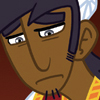

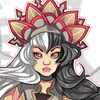







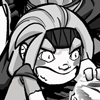


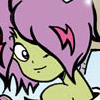




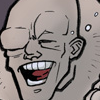











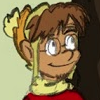



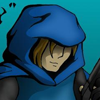
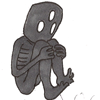





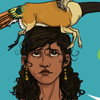








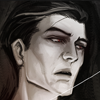
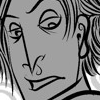




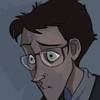














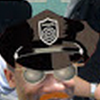


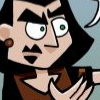


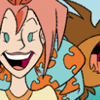
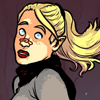



















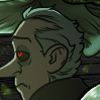


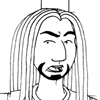


Hey, El Santo? Looking back on this old review, I was just wondering about something that doesn’t have to do with the comic itself, but rather about one of the subjects you brought up: would you say that Hercule Poirot really is a nasty little creep, like his creator thinks, or were you just calling him that to put into context how much she ended up detesting him? I ask because I’ve been getting interested in reading the Poirot stories, and while I know that he IS arrogant, would you personally say that, like Sherlock Holmes, he can be a prick, but ultimately makes up for the shortcomings of his personality?
I’d say that’s how I (and probably pretty much any Hercule Poirot fan) sees it too. Perhaps it’s best illustrated in “Murder on the Orient Express.” If I remember correctly, at the beginning he turns down a guy’s request because there’s something about him he doesn’t like. It comes off as a bit arrogant at first, but the more we learn about the potential client, the more we realize that Poirot’s initial instincts were right. Then there’s the ending. Poirot could easily be the cold, Jauvert type in pursuit of cold, hard justice, but he considers the moral implications and decides on what can be seen as an obstruction of justice to spare the people involved. He’s arrogant and full of himself, but in the end I think he takes on these cases because he genuinely likes the people he’s solving them for.
Unfortunately 8-bit Theatre has changed its URL style and all the links in your review are now broken. Do you mind updating them, please?
Looking over this, I agree with your emphasis on writing over artwork. I honestly can’t stomach most web comics, find they’re largely mediocre artwork with writing that makes me want to read Hitchhiker’s Guide instead or take the shorter route and hang myself with my own intestines. Speaking of which, I would actually compare the way 8-bit evolved, and I DO mean evolved, to the way Hitchhiker’s degraded. Hitchhiker’s got more serious, lost it’s humor, and ended with neither a punchline or a sigh of relief; it just did.
8-bit changed, but for the better in my opinion. All that energy you loved from the beginning is still there, in my opinion, but it’s increased in it’s impact. Take the authority figures for example. In the beginning you had Steve, Garland and Bikke. All have the wit and cunning of turnips, and are somewhat malicious, save Garland, and the Light Warriors must suffer through their ineptitude for humor’s sake. By the 600s though, things are different, the LWs have come too far and, frankly, are too damn evil for listening to yet another moron say something stupid. Now they have Sarda, who actively acts like a moron just so he can wait for someone to act superior to them to give him an excuse to hurt them, which is funny, or just hurt them for no reason, which is hilarious. Sure, there were more “serious” events later on, but all were followed by an anti-climax which parodied the seriousness. When Black Mage dies, he temporarily becomes the leader of hell. Black Belt’s whole heroic speech about potential is punctuated by the fact that he died accomplishing NOTHING.
Like Mel Brook said: “If I got a paper cut, that’s a tragedy. If you fell down an open manhole and died, that’s comedy.”
Pingback: Nintendo » The Webcomic Overlook #17: 8-Bit Theater
Pingback: The Webcomic Overlook #35: VG Cats « The Webcomic Overlook
Pingback: The Webcomic Overlook #44: Order of the Stick « The Webcomic Overlook
Pingback: Brian Clevinger on the only option for independent comics « The Webcomic Overlook
Pingback: The Webcomic Overlook #107: The Dreamland Chronicles « The Webcomic Overlook
Pingback: One Punch Reviews #41: How I Killed Your Master | The Webcomic Overlook